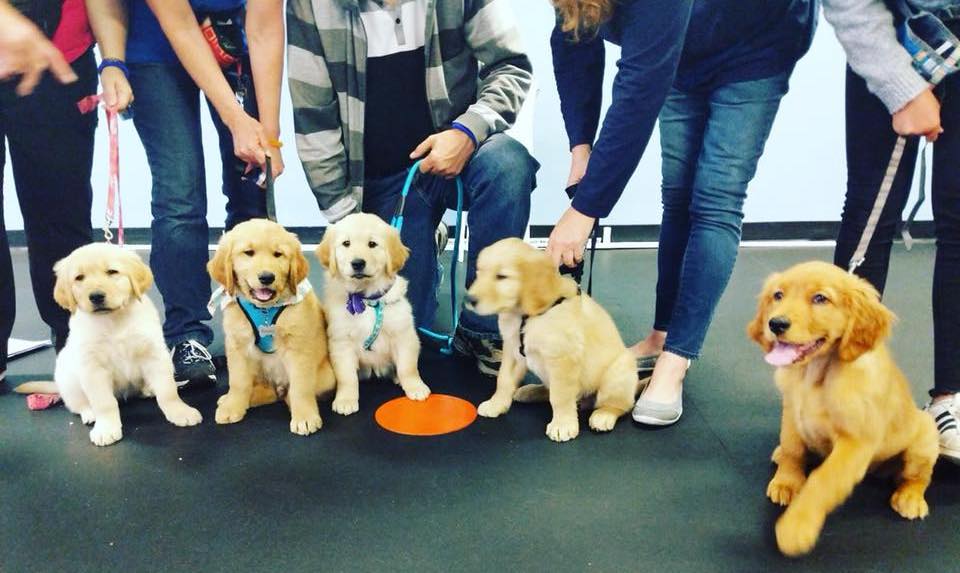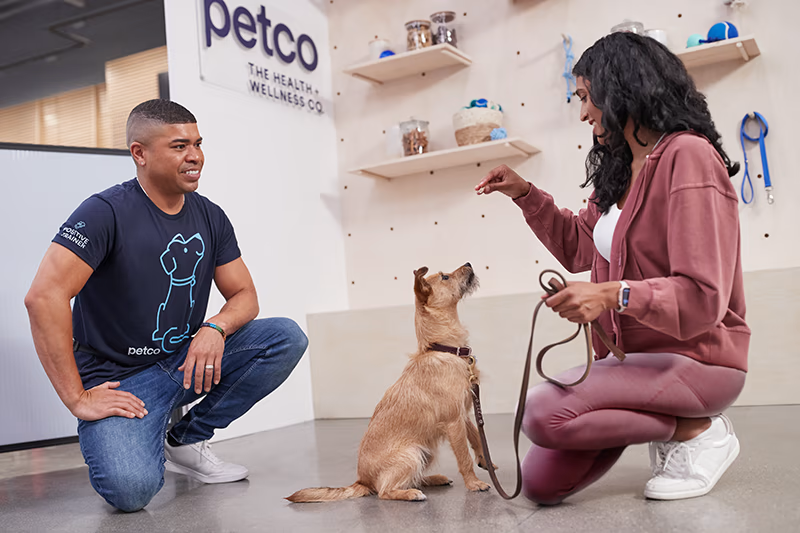Puppy Training at Home: Simple Steps to Raise a Well-Mannered Dog
Puppy Training at Home: Simple Steps to Raise a Well-Mannered Dog
Blog Article
Top Pup Training Methods to Ensure a Well-Behaved Pet Dog
Effective young puppy training is critical for cultivating a mannerly companion, and various strategies can considerably affect a canine's advancement. Among these, positive reinforcement stands out as a foundational technique, advertising trust fund and motivating preferable habits. Consistency in commands and very early socializing are similarly important, preparing for a well-adjusted pet. Furthermore, the roles of dog crate training and leash etiquette can not be ignored. As we discover these approaches further, it comes to be clear that the success of pup training rests on a mix of techniques that can transform your pet's habits in impressive ways.
Favorable Reinforcement Techniques
Utilizing favorable support strategies is vital for effective puppy training, as it urges wanted habits through incentives instead than punishment. This technique profits from the all-natural discovering procedures of canines, strengthening etiquette by offering tangible and immediate incentives, such as treats, praise, or play. By linking positive end results with certain actions, pups are more probable to repeat those behaviors in the future.
Rewards must be given right away after the desired actions takes place to create a clear connection in the puppy's mind. In addition, differing the kinds of rewards can maintain a puppy's passion and inspiration throughout the training process.

Consistency in Training Commands
Preserving consistency in training commands is crucial for reinforcing the lessons found out with positive reinforcement methods. Dogs thrive on routine and predictability, so utilizing the same spoken commands and hand signals for particular habits is important. This harmony aids puppies recognize what is anticipated of them, reducing confusion and irritation for both the family pet and the trainer.

Timing additionally plays a considerable role in consistency. Commands must be delivered promptly during training sessions and followed instantly by favorable reinforcement, such as treats or appreciation. This immediate feedback assists solidify the organization in between the command and the desired actions.
Including consistency right into training sessions will certainly produce a secure knowing environment, advertising quicker proficiency of commands. Eventually, a well-structured approach cultivates a strong bond in between the puppy and its owner, resulting in a much more obedient and mannerly animal.
Socializing With Other Animals
Socializing with various other family pets is critical for a puppy's advancement, as it helps them find out appropriate actions and communication skills in diverse social contexts. Very early interactions with different pets can significantly affect a young puppy's temperament and adaptability in different situations. When puppies are revealed to a range of pets, they become more certain and less fearful, which can prevent potential behavior issues later on in life.

Moreover, observing body movement throughout interactions is important. Show your puppy to recognize signals from various other animals, such as indicators of playfulness or pain, fostering mutual regard and understanding. Routine socializing not just improves your young puppy's social skills but additionally adds see page to their total well-being, creating an extra harmonious living atmosphere. To conclude, prioritizing interactions with other family pets will produce a all-round and socially proficient pet.
Pet Crate Training Advantages
Acknowledging the numerous benefits of crate training can significantly enhance both the puppy's and proprietor's experience. Crate training provides a protected and safe environment for pups, ensuring they really feel secured when left alone. This sense of safety and security can considerably reduce stress and anxiety and stress degrees for both the pet dog and the proprietor.
Furthermore, pet crates offer as a useful house-training tool. Pups normally stay clear of staining their sleeping area, consequently urging them to hold their bladder up until they are allow outdoors. This instinct can quicken the house-breaking procedure, cultivating good habits at an early stage.
When unsupervised,Crate training also assists in managing a young puppy's behavior - puppy training. By giving a designated area, owners can stop destructive learn this here now habits, such as chewing on furnishings or entering unsafe substances. Cages can be beneficial during travel, using an acquainted area that can help calm a young puppy in new settings.
Last but not least, establishing a cage regular encourages self-reliance, permitting pups to learn how to be alone without anxiety. On the whole, crate training is a reliable approach for advertising safety and security, discipline, and harmony, causing a well-adjusted, well-behaved animal.
Chain Training Essentials
Leash training is a basic aspect of liable pet dog ownership that makes sure a delightful and safe strolling experience for both the pup and its proprietor. Proper chain training starts early, ideally throughout the pup's socialization duration. When out in public., this training assists establish great behaviors and advertises positive actions.
To begin, choose a comfortable collar or harness that fits your young puppy well. Attach a durable chain, guaranteeing it is not also long, as this can result in pulling and erratic habits. Beginning in a quiet environment to reduce interruptions and slowly introduce your young puppy to brand-new surroundings.
Usage favorable reinforcement techniques, such as deals with and praise, to urge your young puppy to stroll close to you. If your pup pulls, quit walking and await them to return to your side prior to continuing. This educates them that drawing will certainly not produce onward activity. Uniformity is essential; method over here consistently and remain individual, as proficiency requires time.
In addition, include short training sessions with fun diversions to build your young puppy's emphasis. With devotion and persistence, leash training will certainly result in a hospitable friend, making strolls satisfying for both the owner and the pup.
Verdict
In verdict, utilizing reliable puppy training techniques is essential for developing a mannerly animal. Generally, these approaches jointly promote a harmonious connection in between puppies and their proprietors.
As we check out these approaches further, it ends up being clear that the success of young puppy training hinges on a combination of techniques that can transform your animal's habits in impressive ways.
Using positive reinforcement methods is essential for effective pup training, as it urges wanted habits with rewards instead than penalty.Crate training also aids in managing a young puppy's actions when not being watched.Leash training is a fundamental element of responsible pet ownership that makes certain a satisfying and safe walking experience for both the young puppy and its owner.In verdict, utilizing reliable pup training methods is critical for developing a well-behaved pet dog.
Report this page